NIL
NCAA, CFP, NIL Draw Attention of Boyle, Shapiro, State House Leader
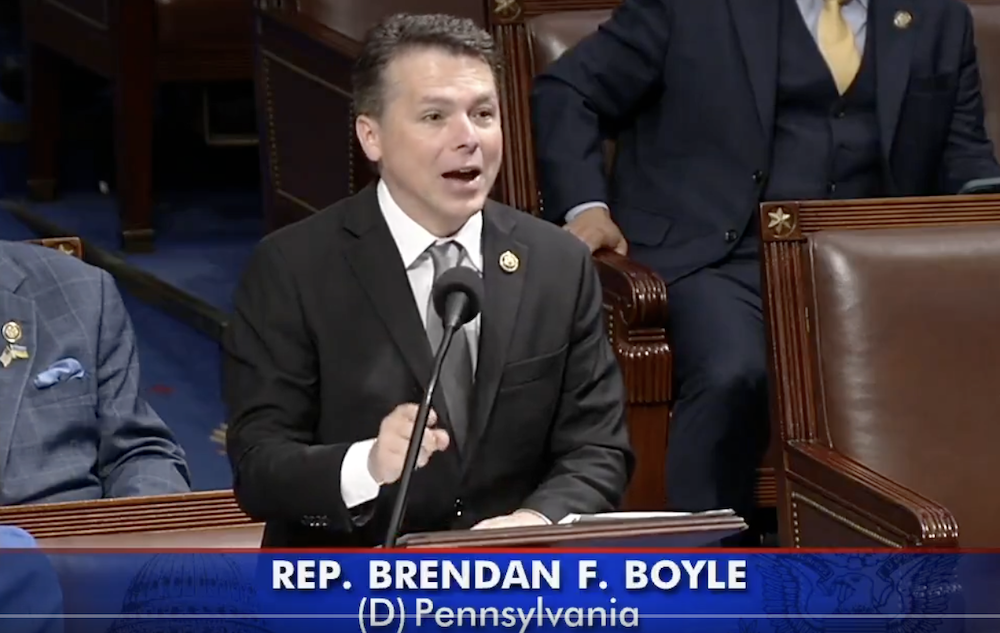
You have heard of the NCAA. But are you familiar with the CFP? How about NIL?
Did you know that Judge Claudia Wilken is one of the most important people in college sports today? Why is that? What is this House v. NCAA case you are hearing so much about?
Remember when college football and collegiate sports was easy. At least four Pennsylvania elected officials do and want to ensure that Penn State, Pitt, and Temple students that participate in college athletics get a fair shake.
Congressman Brendan Boyle (D-02) is concerned that the power structure among the Power 4 conferences in Division I – led by the Big Ten (B1G) and the Southeastern Conferences (SEC) – might be “rigging the system” to reduce postseason football opportunities for those in the Atlantic Coast and Big XII conferences.
Reps. Jesse Topper (R-Bedford/Fulton) and Perry Stambaugh (R-Juniata/Perry) are planning to introduce legislation in the State House that would protect athletes “from poor financial decisions when being paid for name, image, and likeness (NIL) rights.”
And Gov. Josh Shapiro says that NIL, combined with the “transfer portal” which permits students participating in athletics freedom to transfer among schools, is “out of control” and thinks that “real reform” in that space is needed.
The NCAA – or National Collegiate Athletic Association – is currently facing a significant amount of scrutiny under antitrust laws, primarily due to rules restricting athlete compensation and eligibility. The House v. NCAA settlement, which provides for $2.8 billion in back payments to athletes, also allows schools to share a portion of athletic revenue with students with a cap of $20.5 million per school.
Colleges and universities in NCAA Division I – the highest playing level within the 1,100-school association – are scrambling to find ways to pay their students. The largest pile of cash comes from broadcast networks such as Fox, ESPN, Warner Bros. Discovery, and NBC, not only for broadcast rights for regular-season games, but also for the postseason College Football Playoff (CFP).
It was not that long ago when the postseason championships structure in the FBS (Football Bowl Subdivision) consisted of a two-team playoff. Beginning in 2014, the CFP was created and expanded the field to four teams. Last season, the powers-that-be agreed to a 12-team bracket, and in 2026, because things such as this seldom shrink, the field may expand again.
The B1G, of which Penn State is a member institution, and the SEC are holding the best cards in negotiations over the format for 2026 and beyond, as the ACC, which includes Pitt as a member, and Big XII have ceded control to those leagues. That is where Boyle comes in.
College sports officials have spent the last four years seeking federal legislation to regulate the booming market for college athletes without running afoul of federal antitrust restrictions. To the northeast Philadelphia congressman, that causes problems.
Boyle explained his tweet during the PoliticsPA podcast, “Voices of Reason.”
“What I was taking issue with, and what so many others have taken issue with, is what the Big 10 and SEC are proposing to do,” he said. “The roughly 34 or so member institutions in those two conferences would break away from the other 100 colleges and universities and, before the season begins, guarantee themselves eight of these 16 spots (in the 2026 CFP playoff). This would be unprecedented and this would be the first sign of essentially a breakaway within major college sports. It would, and I’m not the first one to use this as others have said, this would be rigging the system literally before the season begins.”
It is a fair question to ask why a Congressman who, supposedly has more important things to concern himself with, is spending time on college football? Especially Boyle, who is the ranking Democrat on the House Budget Committee.
“First I can chew gum and walk at the same time,” he shared. “In the last few weeks I have pulled three all-nighters on the House floor as the budget committee ranking member, the lead Democrat on the budget committee, basically leading the opposition to the reconciliation bill. I was able to do that and still take the 10 seconds to issue the tweet that I did in order to get the Big 10 and SEC’s attention, so that’s number one, these things are not mutually exclusive.
“Number two as to why would a government official and a member of Congress even offer an opinion on these subjects … well, first, anyone who follows my social media knows I’m a passionate Philly sports fan and passionate Notre Dame football fan so I often will opine on sports and express my views.
“But on a more serious point, this is a multi-billion dollar industry,” Boyle continued. “If you were to take the 10-year value of some recent TV contracts, literally over a $1 trillion dollar industry … point to me any other multi-billion dollar or trillion-dollar industry in which government doesn’t have a role in regulating. I think it is appropriate, especially if there’s going to be real harm done to a wide swath of major colleges and universities which, make no mistake about it, would be the impact of the Big 10 and SEC essentially giving the Heisman to the rest of college athletics and separating themselves.”
The House judgment, which has yet to be approved by Wilken, who sits on the 9th District Circuit Court in California, is expected by college administrators any day now. This development has drawn the legislative pen of Topper and Stambaugh, as a lot of money will be flowing to those who have not had it before.
Topper, the state’s House Republican leader, and Stambaugh are introducing legislation that “seeks to minimize student-athlete vulnerabilities and provide stronger institutional frameworks to protect student-athletes’ financial interests. It balances athlete empowerment with reasonable protections.”
Their language will state that institutions of higher education will be required to offer all student-athletes the option to place a portion of their revenue sharing or NIL earnings into trust accounts. The institutions may partner with established financial institutions experienced in educational trust management to minimize administrative overhead. Additionally, institutions will be mandated to provide financial literacy education and resources to their student-athletes.
“NIL is one of the most dynamic and evolving spaces in the national sports market that has become a life-changing positive for many student-athletes and families. As the NIL landscape continues to advance at the federal level, it is appropriate for state legal supplements to ensure student-athletes are protected at a vulnerable time in their lives,” Topper said.
“It’s the wild, wild west in college sports,” said Stambaugh on the current state of college athletics. “It’s probably the biggest change in college sports since the NCAA was created 120 years ago. “This is something Pennsylvania needs to address, and we need to address it right now.”
Shapiro, a huge sports fan, said Wednesday that he has yet to see Topper and Stambaugh’s proposed legislation, but said that he believes that students who participate in college athletics should be able to get paid.
“I think student athletes should be able to have the freedom to pick which college they want to attend and where they want to bring their talents,” the governor said. “So those underlying principles have to be part of this. But what we have to do is make sure there is some ability for all schools to be able to compete in this space, in all sports, and that it not be the situation where we end up losing athletics for both men and women as a result of this process. The NIL can drive a lot of dollars into one particular sport and choke off others, or one particular area and choke off others. I think it is important that we’re in a position where we’re able to really compete.”
There are states that have codified laws that enable their FBS institutions to not be obligated to follow NCAA rules that are deemed anticompetitive. Tennessee signed Senate Bill 536 into law, giving major protection to college sports programs in the state, including the flagship University of Tennessee, a member of the SEC, as they traverse the new, chaotic NIL landscape. It is one of the most “athlete-friendly” NIL laws in the country, as the law will protect UT and others in the state from antitrust lawsuits while taking some shots at the terms within the settlement.
“I don’t want to do anything that limits their ability to compete,” said Shapiro. “What I want to do is see how we can get schools to be lifted up. I know that there’s been a lot of talk about a broader settlement in this space, in the NCAA. I think that’s a piece of it. I’ve talked to Senator (Cory) Booker, who’s been a leader on this at the federal level. I know they’re thinking about something to do, but I certainly wouldn’t be opposed to exploring what we could do here in the Commonwealth.”
Boyle echoed that sentiment while also sounding a warning about a power play by the B1G and the SEC could drastically hurt two Pennsylvania FBS schools.
“The schools that really have to be nervously watching this, frankly, are schools like Pitt and Temple and the other 100 colleges and universities that are outside the Big 10 and SEC,” he said. “Besides the fact their second class status would now be established for the first time ever, this would really limit their ability to make the playoff which means it would limit their ability to earn a pretty significant amount of revenue.”
Boyle also reinforced why this is becoming more of an issue in Washington, D.C.
“A number of colleges and universities – actually all of them basically – and the major conferences have been coming to Congress asking us to pass legislation on these issues,” he said. “So, in my tweet and in other conversations, I have reminded them that if you’re coming to Congress expecting help, and then you’re turning around and rigging the system and trying to exclude most of the other colleges and universities and doing so in a grotesquely patently unfair way, don’t be surprised if you find an unsympathetic audience in Congress.”
When asked what the end game might be, Boyle sided more with the fan than with the schools. And colleagues on the other side of the aisle agree with his line of thinking.
“If I can make one generalization of what I’m looking out for, I want what is in the best interest for the game,” he said, “the students, and the fans whose passion for all of this is what has led to to all of this money. Any conference or conferences who are going to act in a completely selfish monopolistic way or duopolistic way, that is where I draw the line and have a real problem with. The ramifications of that will not just be for 2026. They will be for many years and and decades to come.”
NIL
Michigan urged to hire veteran college football coach amid coaching search
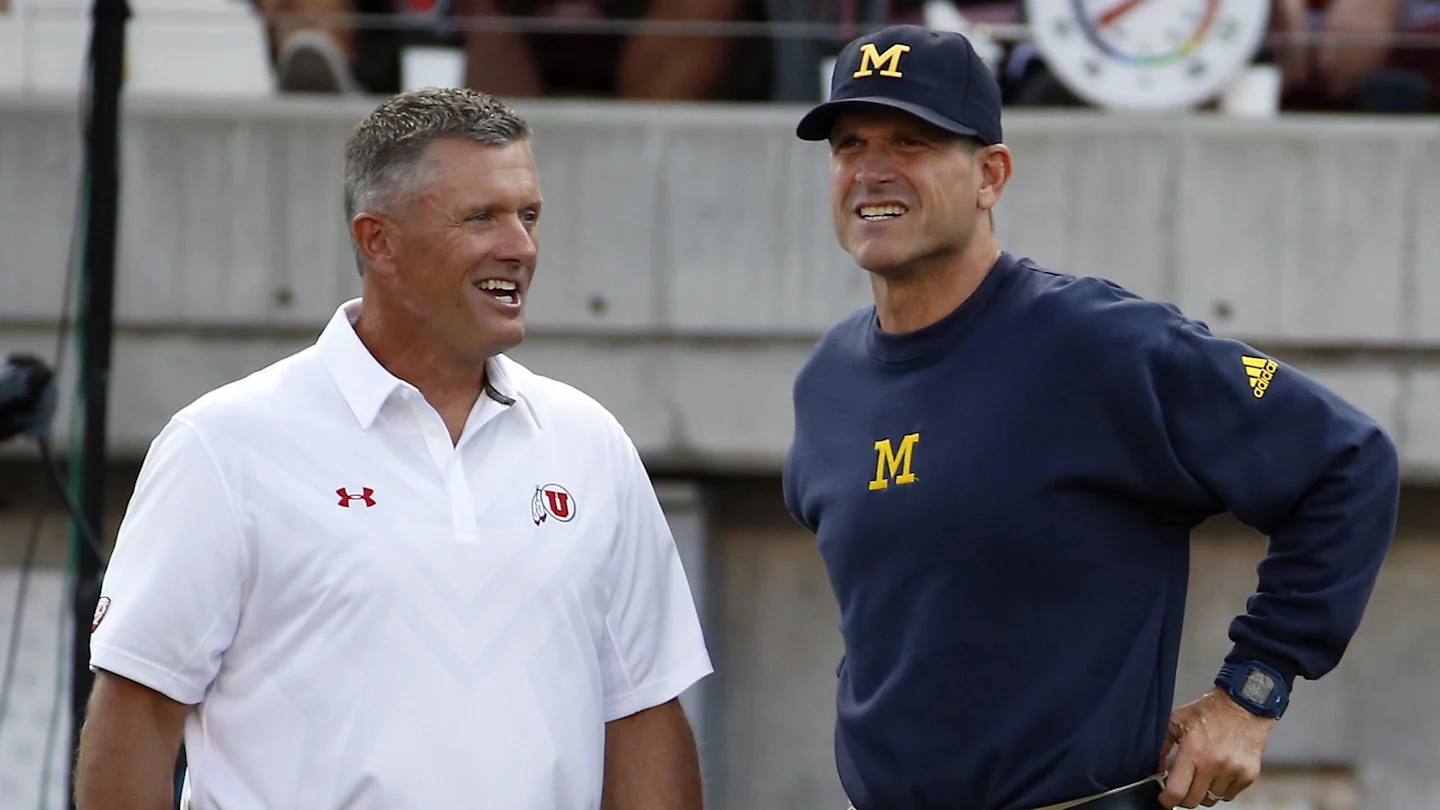
The search is on for Michigan to not just find a quality replacement for Sherrone Moore as its next head football coach, but more importantly to scout a figurehead who will bring stability to a program that badly needs it.
And despite the Wolverines arriving late to the college football coaching carousel, with seemingly all the best options already accounted for, a recent resignation at a major program could actually help the school at this crucial moment.
The departure of coaching veteran Kyle Whittingham from Utah could spell a blessing in disguise for Michigan, ESPN broadcaster Matt Barrie said on his eponymous show.
What Michigan needs right now

“What they need is Kyle Whittingham. They need Kyle Whittingham,” Barrie said on his college football program of Michigan’s ongoing search.
Not only is Whittingham a coaching figure who has been a proven winner and fielded consistently-competitive teams. He also has a very good reputation.
“They need Whittingham, who ran a good, clean program at Utah,” Barrie said.
“I get it. He’s older. He’s not the sexiest hire in terms of name recognition and youth. But you need a guy to steady that ship.”
Michigan needs to be steadied
The ship has most certainly not been steady these last couple years.
Whether it was the Covid-era recruiting scandal under Jim Harbaugh, the sign-stealing affair connected to former assistant Connor Stalions, or the shocking removal of Sherrone Moore following an alleged relationship with a staffer that resulted in him facing criminal charges, it’s clear Michigan needs a reboot.
And yet, despite everything, it’s also been quite a run for the Wolverines for one very good reason, as the program won its first national championship of the century under Harbaugh’s direction in 2023.
But given everything that happened during and since then, change is in order.

So, is Whittingham the answer?
Judging by his own recent remarks, he very well could be.
Following his own departure from Utah, the veteran coach very much gave the impression that he is still interested in patroling a sideline somewhere.
“Who knows? We’ll see, I guess, stepping down, stepping away, and re-evaluate things and see where we’re at. I’m a free agent. I’m in the transfer portal,” Whittingham told reporters.
“Like I said, I’m at peace and I did not want to be that guy that overstayed his welcome with people just saying, ‘Hey, when’s this guy gonna leave?’ That was not my intention, ever. I hope I didn’t do that. I’m sure with some people, I did do that, but the timing to me, the timing is right.”
He is a proven winner
Whittingham is the all-time winningest coach in Utah football history, going 177-88 during his 21 seasons with the program.
Michigan is looking for known commodity, although at 66 he may be on the older end of the spectrum as the school considers what it hopes will be a long-term solution.
But having an experienced head coach suddenly come on the market at this exact moment must have Michigan wondering if he could be the answer, as most of the other high-profile names are already taken or staying put where they are, getting lucrative extensions to prevent their fleeing.
Known as someone who has recruited and fielded some punishing defenses over the years, and whose teams have traditionally dominated at home, Whittingham could be the man for the job.
What the markets are saying
Whittingham remains the favorite to become the next head coach at Michigan, sitting out in front with 22 percent odds to take the job, according to the prediction market Kalshi.
Washington head coach Jedd Fisch sits in second with 16 percent likelihood, and Louisville head coach Jeff Brohm places third at 14 percent.
(Barrie)
Read more from College Football HQ
NIL
2025 CFP Odds: Lines, Spreads for Each Quarterfinal Game
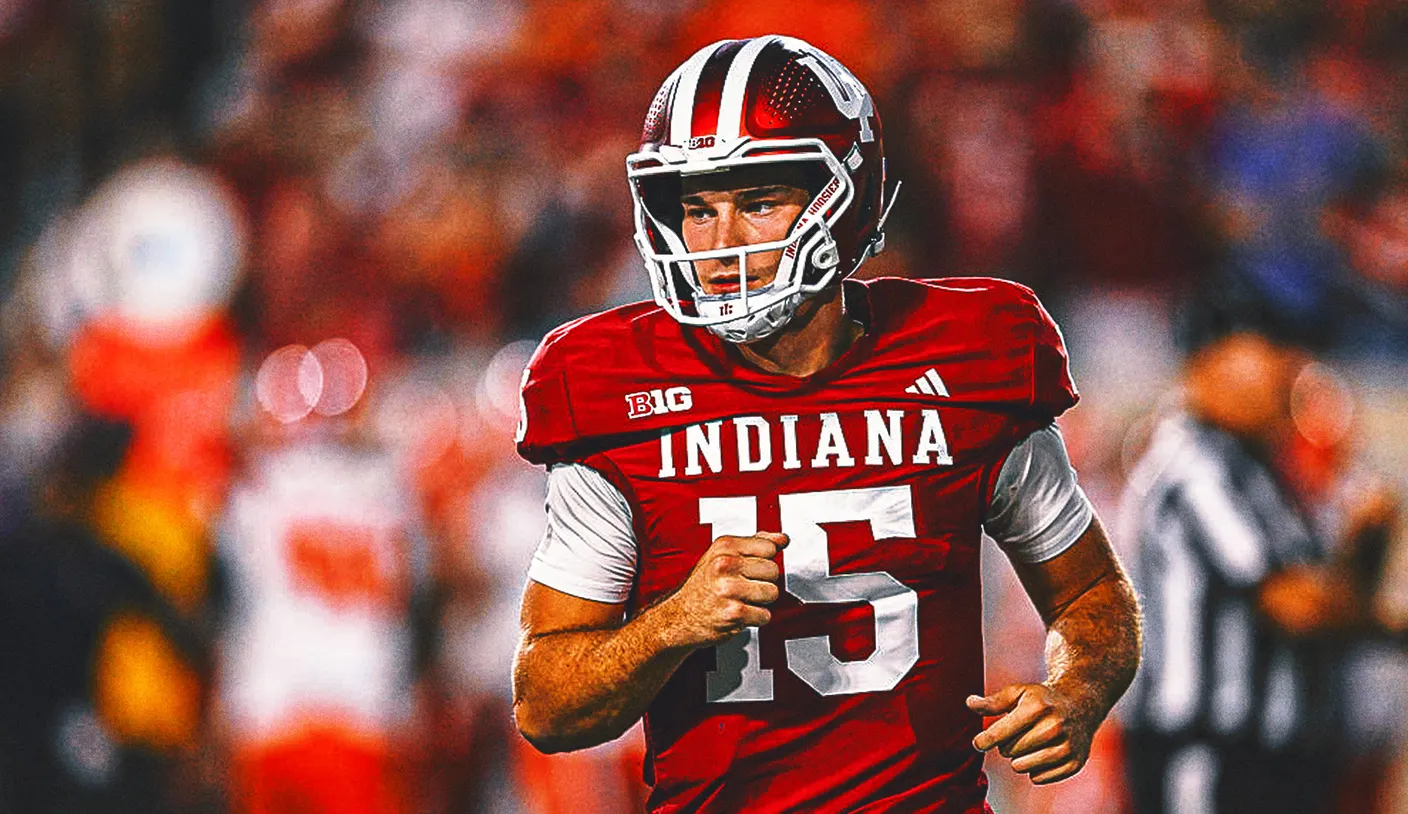
We’re on to the quarterfinals of the College Football Playoff.
Let’s look at the odds for the second round at DraftKings Sportsbook as of Dec. 21.
This page may contain affiliate links to legal sports betting partners. If you sign up or place a wager, FOX Sports may be compensated. Read more about Sports Betting on FOX Sports.
WEDNESDAY, DEC. 31
No. 10 Miami vs. No. 2 Ohio State
Cotton Bowl
Spread: Ohio State -10
Moneyline: Ohio State -360, Miami +285
O/U: 41.5
What to know: Miami won a defensive slugfest in the first round at Texas A&M, and now it gets the defending champion Buckeyes, with a spot in the semifinals on the line. What has to worry Hurricanes fans is that Miami scored just 10 points against the Aggies on Saturday, a middle-of-the-pack defensive team. Ohio State has the best defense in the country, only allowing more than 10 points twice this season. No team has scored over 16 on the Buckeyes.
THURSDAY, JAN. 1
No. 9 Alabama vs. No. 1 Indiana
Rose Bowl
Spread: Indiana -7
Moneyline: Indiana -258, Alabama +210
O/U: 48.5
What to know: Would you believe that the Hoosiers are a 7-point favorite over mighty Alabama? It’s a new era in college football. The Tide went to Oklahoma and knocked off the Sooners in the first round of the CFP, and now they get a date with undefeated Indiana, the top team in the country. Indiana will trot out Heisman winner Fernando Mendoza at quarterback, and the Hoosiers have scored 55 points or more six times this season.
No. 6 Ole Miss vs. No. 3 Georgia
Sugar Bowl
Spread: Georgia -7
Moneyline: Georgia -270, Ole Miss +220
O/U: 56.5
What to know: Ole Miss dominated Tulane in the first round of the Playoff, jumping out to a 41-3 lead before winning 41-10. Now, the Rebels get another shot at the Bulldogs, who they lost to back on Oct. 18 in Georgia, 43-35. It won’t be a cakewalk for the Bulldogs, who trailed 35-26 in the third quarter of that game before scoring the final 17 points to eke out an 8-point win.
No. 5 Oregon vs. No. 4 Texas Tech
Orange Bowl
Spread: Oregon -1.5
Moneyline: Oregon -120, Texas Tech +100
O/U: 52.5
What to know: Oregon did what many thought it would do in the first round, and that’s rout James Madison. The Ducks led 34-3 before cruising to a 51-24 victory, setting up a date with Texas Tech on New Year’s Day. OU still has a single loss to its name this season, a 30-20 defeat at the hands of No. 1 Indiana on Oct. 11. The Red Raiders also have only one loss on the year, falling at Arizona State back on Oct. 18.
Want great stories delivered right to your inbox? Create or log in to your FOX Sports account, and follow leagues, teams and players to receive a personalized newsletter daily!
NIL
Oregon Ducks Playoff Uniforms Instantly Steal the Show
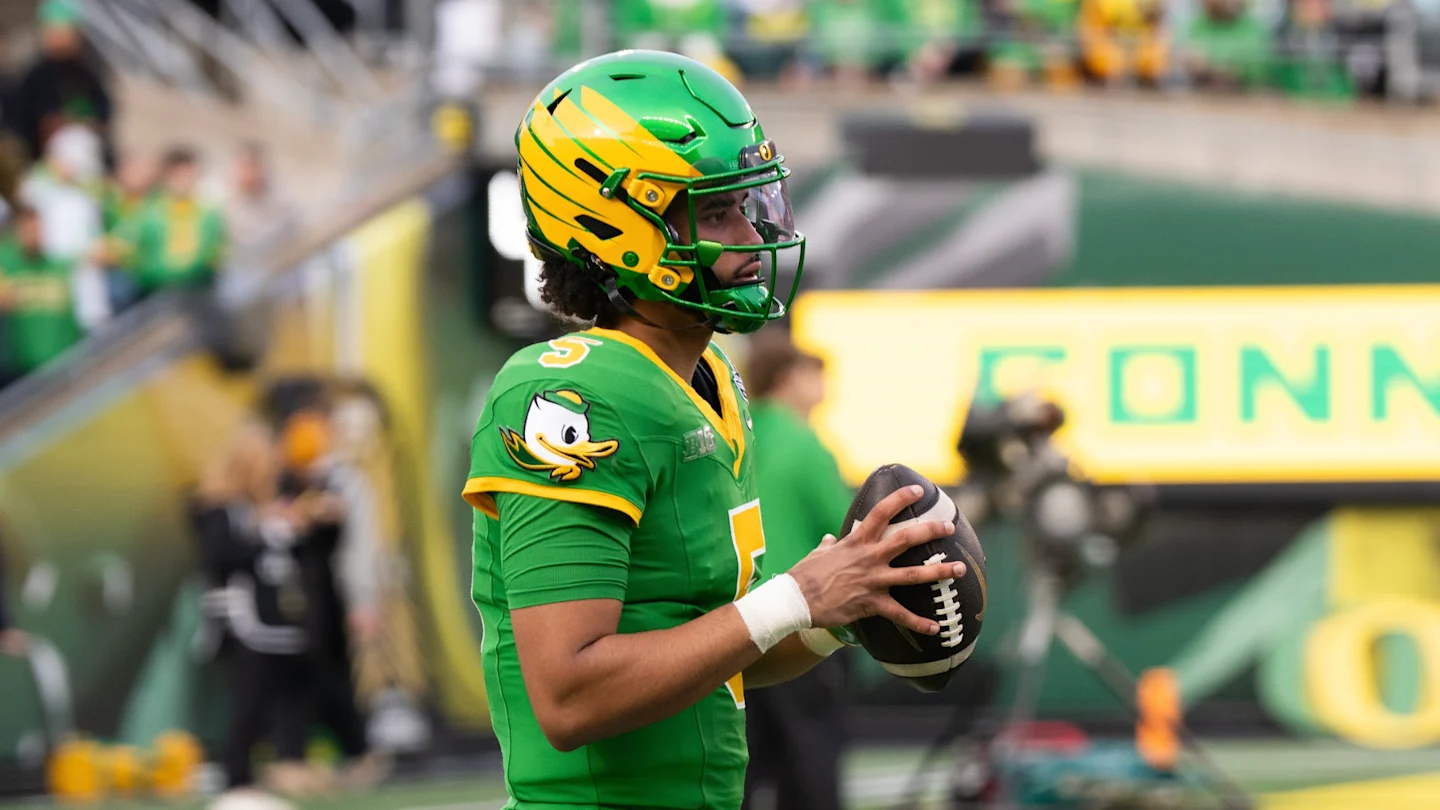
EUGENE – The Oregon Ducks’ uniforms stole the spotlight in the first round of the College Football Playoff. Long celebrated for their innovative Nike designs, the Ducks may have unveiled their most striking combination yet, paying homage to their classic colors while adding fresh, bold details.
As Oregon takes the field against James Madison in Autzen Stadium’s first-ever playoff game, fans and analysts alike struck by the uniform combination and how they add to the pageantry. From the gleaming helmet to the eye-catching cleats, every element of the look was designed to make a statement. In this historic debut, it did just that, reinforcing Oregon’s reputation as the gold standard in college football style.





Oregon’s Uniforms Make Big Statement
The team is wearing a green “Gang Green” Generation O jersey, paired with a glossy green helmet featuring a yellow wing, yellow pants, green undergarments with yellow accents, and yellow-and-green ombre cleats. A College Football Playoff patch sits on the right side of the jersey, just above Oregon’s Nike Swoosh, complete with the logo and “Playoff First Round Presented by Allstate.”
The uniforms also made history – the first time that solid yellow wings were featured on an Oregon helmet in program history. The green helmet, green jersey, yellow pant is a combination that has been worn only six times in program history in the modern era.

Oregon’s uniforms aren’t just cool designs that go viral on social media, they’re a representation of the Ducks’ national brand. Not only do the new uniforms reflect the program’s innovative culture and performance identity – the impact on recruiting is undeniable. It’s not just fashion; it’s strategy and branding.
The electricity in Autzen Stadium is palpable for the postseason game. A true home field advantage, the fans in Eugene know how to turn up the decibel levels. Ducks fans have turned Autzen into a house of doom for opponents who make their way west. The Ducks have an impressive 25-2 record in Autzen Stadium under coach Dan Lanning. The Ducks are 54-4 at home since the start of the 2017 season.
If the Ducks beat James Madison, they will play the No. 4 Texas Tech Red Raiders in the quarterfinals at the Orange Bowl on Jan. 1 in Miami. Oregon is making its third College Football Playoff appearance overall and is one of just four teams (Georgia, Indiana, Ohio State) to make the field each of the last two years.
A win would hive Oregon its first playoff win since since beating Florida State in the CFP Semifinal at the Rose Bowl on Jan. 1, 2015. It also would send Oregon to its first-ever Orange Bowl appearance.
Holiday heat. @CFBPlayoff First Round uniform combo for @OregonFootball. #GoDucks pic.twitter.com/FcWBbbRLbT
— GoDucks (@GoDucks) December 18, 2025
Oregon coach Dan Lanning spoke to how the senior leaders are stepping up before the playoff.
“Guys are excited about the opportunity, but I think it’d be wrong to say that the preparation is different this week than any other week, right? Yes, the game’s different. We all feel that. We recognize that, that it’s different. But it’s not like guys are like, okay, let’s work hard now. They’ve been working hard, right? You work hard to get into this moment, and then it’s about maintaining that level, that standard as you approach games like this,” Lanning said.

MORE: Oregon Ducks Lose Receiver To Transfer Portal Amid Injury Updates
MORE: Oregon Ducks Uniforms Flex The Power Of A National Brand In Playoff Spotlight
MORE: Oregon Ducks Intriguing Injury Report vs. James Madison
SIGN UP FOR OUR NEWSLETTER HERE!
JMU Quarterback Alonza Barnett III Talks Oregon’s Uniform
JMU quarterback Alonza Barnett III on playing in an environment like Oregon’s Autzen Stadium. pic.twitter.com/aG4KviRIeh
— Catie Harper (@CatieHarper) December 15, 2025
JMU’s starting quarterback Alonza Barnett III gave an unexpected shoutout to the Ducks, further highlighting Oregon’s national brand not only through their play throughout the years, but also in their iconic uniform designs.
“They had the flashy jerseys, Marcus Mariota, Darren Thomas, Darren Carrington, Kenjon Barner, a bunch of people. I was one of those kids who grew up watching Oregon. And so, this is an environment you dream of playing in. If you are who you say you are, you can’t shy down when the lights are bright,” Barnett added.
The Ducks look to slow Barnett III, who has thrown for 2,533 yards and 21 touchdowns this season.
NIL
Iowa football lineman highlights importance of opting into bowl games
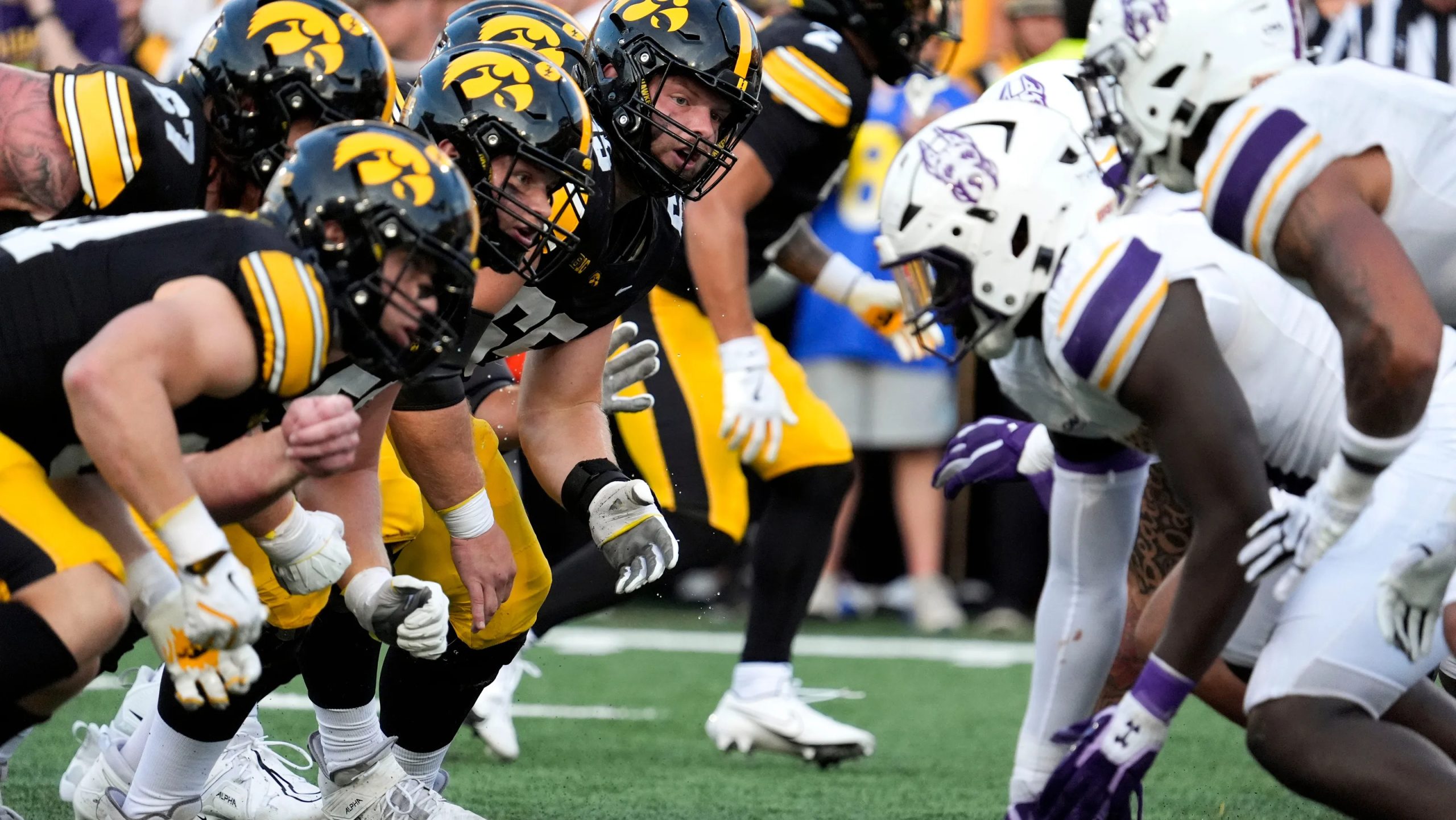
Dec. 21, 2025, 7:45 a.m. CT
As No. 23 Iowa football (8-4, 6-3 Big Ten) prepares for its ReliaQuest Bowl matchup against No. 14 Vanderbilt (10-2, 6-2 SEC), Hawkeyes’ sophomore offensive lineman Trevor Lauck discussed why Iowa’s roster is committed to playing in its upcoming bowl game.
In a college football climate where the influence of NIL opportunities and the transfer portal steer many away from playing in bowl games, Lauck commented on how the Hawkeyes view the ReliaQuest Bowl as a chance to finish the season the right way.
“I feel like the point of college football is to go out there and win games with your team,” Lauck said.
“I feel like people kind of lose track of that when it comes to the bowl season. It kind of turns into people thinking about themselves, and that’s why I’m super fortunate to be here at a school like this. It’s still a team. No one’s really thinking about themselves right now. This is still the 2025 season, and we want to finish it strong.”
Lauck has played in 15 games as a Hawkeye, including all 12 contests this season at left tackle, and is one of the key contributors to Iowa’s dominant offensive line, which is one of three finalists for the Joe Moore Award.
Although no member of the Hawkeyes has opted out of the ReliaQuest Bowl, running back Terrell Washington Jr. reportedly will enter his name into the transfer portal when it opens on Jan. 2, 2026.
The ReliaQuest Bowl will take place at Raymond James Stadium in Tampa, Fla., on Dec. 31. Kickoff is scheduled for 11 a.m. CT and will be broadcast on ESPN.
Contact/Follow us @HawkeyesWire on X (formerly Twitter) and like our page on Facebook to follow ongoing coverage of Iowa news, notes, and opinions. Follow Scout on X: @SpringgateNews
NIL
Texas Longhorns’ Michael Taaffe Reveals Difference-Making Strategy with NIL
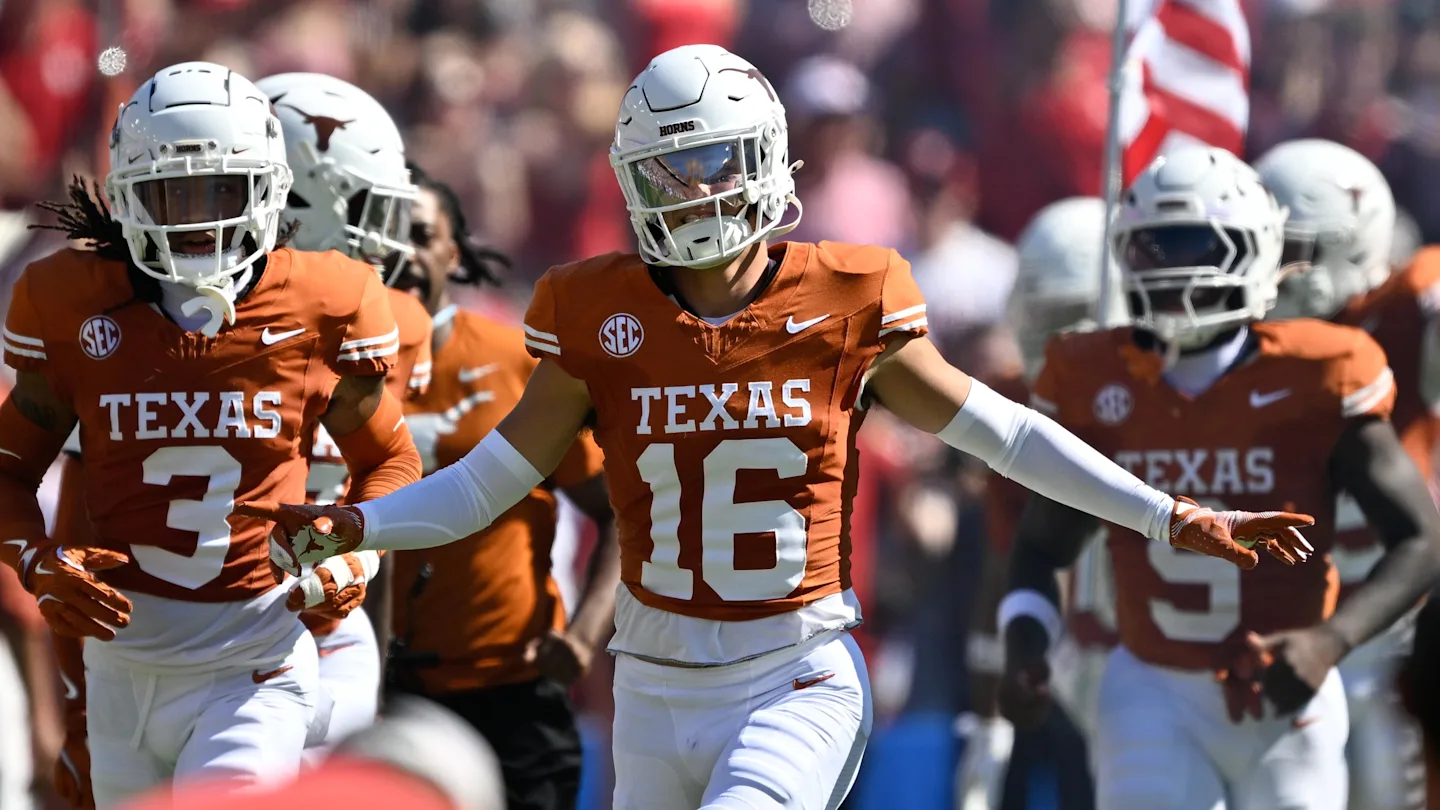
NIL has been one of the biggest and most impactful changes to the world of college football for both programs and athletes.
For some affluent programs, NIL has allowed them to climb back up to be a college football powerhouse, and for those without a track record of great success in the sport its allowed them to gain a seat at the table.
And for the players, they are likely the biggest beneficiaries of it all, finally being able to be financially compensated for the efforts and hard work they put into their programs. However, one Texas Longhorns star has taken a different route when navigating the world of NIL.
Michael Taaffe Discusses his Use of NIL

With Longhorn star safety Michael Taaffe, whether on or off the football field, is one of the best representatives of the Texas program, there’s no better example of that than how the senior has approached NIL and optimized it.
“I think NIL, for me, has been a little bit different because there’s opportunities that I have taken to get a little cash in the wallet, in the pocket,” Taaffe told On3. “But I think, would you much rather have this little success? This little financial success that at the end of the day, when you have to go buy a house, when you have to get a car, when you have to pay rent, this little success isn’t going to matter in the long-term? Or, would you rather have success and significance to the University of Texas that will last 100 years? I chose that route.”
While Taaffe was a part of a few partnerships with outside brands and companies, his main focus was on partnering with Texas Against Fentanyl, where he helped raise nearly $60,000 for the organization through a fundraiser, which he said helped cover the organization’s yearly budget.
Taaffe’s efforts did not go unnoticed, as he was recognized with the Wuerffel Trophy, which is the premier award for community service and recognizes athletes who use their platforms to serve others and create positive change and who exemplify community service, academic excellence, and athletic achievement.
Not only was Taaffe heavily involved with raising awareness of substance abuse, but before the 2025 season, he played a big role in the relief efforts after the flooding at Camp Mystic. The safety participated in a fundraiser for the families and, during SEC Media days, wore a special tie to honor the victims.
Texas DB Michael Taaffe is wearing a tie at SEC Media Days with the initials of the campers & counselors who died at Camp Mystic in the Texas floods🧡
(via @levonwhitt_tv) https://t.co/pEVRDURnuN pic.twitter.com/Tz7Dz2Fshs
— On3 (@On3sports) July 15, 2025
The Longhorns’ star has used his platform to give back to communities in need and to try to make a difference in those communities, which he says hold plenty of importance to him.
“I don’t fault anybody for the routes they take,” Taaffe said. “But I just knew that I believe being significant is way more important than being successful.”
NIL
Why the College Football Playoff system isn’t to blame for lopsided postseason

Everybody wants to fix the College Football Playoff, but nobody seems to know how. There’s a good reason for this. It’s because the College Football Playoff isn’t broken … college football is.
On Saturday, college football die-hards and casuals alike tuned in to watch two games that were largely decided before a snap ever took place. Sure, the possibility of an upset always looms, but the first quarters of Ole Miss’s 41-10 win over Tulane or Oregon’s 51-34 win over James Madison made it clear quickly how those games would go. They were results that would do nothing to slow the ceaseless wave of the college football literati who had spent the last few weeks gnashing their teeth in despair over the possibility these blowouts would happen and what it would all mean.
But the pearl-clutching, hemming and hawing are all directed at the wrong target. What we’re seeing in the College Football Playoff is the result of a far bigger problem in the sport. College football has always been a top-heavy sport, and while we’ve seen a more even distribution of that weight up top thanks to NIL and the transfer portal (the GLP-1 of college football), on the whole, the sport is more top-heavy than ever before.
Resources, talent shifting in one direction
There is far more talent available and far more money coming in than at any time before, and it’s all flowing overwhelmingly in one direction.
If you look at the top recruiting classes for the 2026 cycle, you’ll notice a couple of things. The first is that, for the first time since 2008, the top class in the country belongs outside of the SEC. USC took the honors this year, the first non-SEC program to do so since Miami way back when. Furthermore, Alabama is the only SEC school to finish in the top four, but while that’s nice to see as far as spreading the talent around, it ignores the larger picture.
Sure, the Big Ten has the top spot, but 23 of the top 35 classes call the Big Ten or SEC home. The only non-Big Ten and SEC schools to crack the top 20 were Notre Dame, Miami, Florida State, North Carolina, Texas Tech and Clemson. Of those six, only Notre Dame and Miami are in the top 10, and Miami is 10th.
Pete Golding shows he’s in charge as Ole Miss dominates without Lane Kiffin: ‘He controls what he wants’
John Talty

Damage done by mass realignment
Recruiting rankings are not the only area in which the Big Ten and SEC have consolidated power. They’re just another result of that consolidation. In the last 15 years, the Big Ten has added Nebraska, Maryland, Rutgers, UCLA, USC, Oregon and Washington to the fold. Taking the last four essentially killed the Pac-12, while reaching out and taking Nebraska caused a destabilizing effect on the Big 12. An instability the SEC was all too happy to take advantage of as it poached Missouri, Oklahoma, Texas and Texas A&M from the league over the last 15 years, too. Both leagues will exist in 2026 but largely in name only. Clearly, the Big 12 has survived the attacks much stronger than the Pac-12 has, but the league has seen all of its biggest brands taken from it, which leaves it at a disadvantage when it comes to finding a television deal, causing the gap to grow only wider.
Perhaps that’s why, while we were all forced to suffer the horrors of two uncompetitive football games on Saturday, Arizona State’s Kenny Dillingham was sending out a call to any possible billionaires who wanted to buy him a new roster. Because that’s where we are now with NIL. The sport dragged its collective feet and ignored the giant tidal wave coming at it for decades, only to dive in full speed ahead on openly paying players (some of) what they’re owed. Only, you know, with hardly any regulations or guidelines that everybody can follow and no viable way to enforce them. Whose fault is that? I don’t know? Everybody’s?
Anyway, right now, people are looking at the Group of Five as the problem with the playoff, but believe me: if finances continue to work the way they’re working in this sport, it’s only a matter of time before the ACC and Big 12 get the same treatment people are giving Tulane and James Madison. After all, it’s the Big Ten and SEC who have been handed complete control of the future of the format as a compromise to simply let the ACC and Big 12 continue to exist.
Big Ten, SEC will win out in the end
But, the truth is, the Big Ten and SEC have always controlled the College Football Playoff. The Big Ten and SEC have won nine of the first 11 College Football Playoffs. Clemson is the only team from outside those leagues to win it, and it’s done so twice. Of course, Clemson has only made the field once since the NCAA stopped forcing transfers to sit out a year after changing schools and hasn’t won a playoff game at all. That’s mostly due to Clemson’s stubbornness, but it’s fitting nonetheless.
To drive the point home even further, of the 22 teams that have played in a College Football Playoff National Championship, 16 currently reside in the Big Ten or SEC. Clemson (4x), TCU and Notre Dame are the only teams to get there who aren’t in those leagues (Oregon and Washington made it while still members of the Pac-12, but are now in the Big Ten).
As the Big Ten and SEC expanded, the Big 12 and ACC did what they had to do to try to keep up. All of which has led to bloated conferences spanning the entire continent where you only play half the league in any given season, leading to ridiculous tie-breaker scenarios that end up with a five-loss Duke winning the ACC, which puts those damned Dukes of James Madison in the field!
So what’s the solution? How do we fix it all? I don’t know that you can, but I do believe there’s a natural outcome from all of this that at least leads to equilibrium of some sort.
You simply let nature take its course. Let the Big Ten and SEC finish what they started. Whether you’re excited about it or not — and believe me, I am not — the Super League or whatever dumb name you want to give it is coming. I don’t know if it will be the result of a hostile takeover by the Big Ten and SEC pilfering all the remaining valuable brands once the current television deals expire, or if it’ll be the result of a compromise between the four leagues to break off from the NCAA and form their own, fully professionalized league. But whatever the method, and whatever the final makeup of the schools involved, it is coming.
And when it does, your College Football Playoff will finally be “fixed.” The blowouts, however, will continue.
-

 Motorsports2 weeks ago
Motorsports2 weeks agoSoundGear Named Entitlement Sponsor of Spears CARS Tour Southwest Opener
-

 Motorsports2 weeks ago
Motorsports2 weeks agoDonny Schatz finds new home for 2026, inks full-time deal with CJB Motorsports – InForum
-
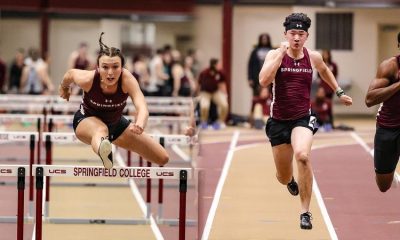
 Sports3 weeks ago
Sports3 weeks agoMen’s and Women’s Track and Field Release 2026 Indoor Schedule with Opener Slated for December 6 at Home
-

 Rec Sports2 weeks ago
Rec Sports2 weeks agoBlack Bear Revises Recording Policies After Rulebook Language Surfaces via Lever
-

 Rec Sports2 weeks ago
Rec Sports2 weeks agoHow Donald Trump became FIFA’s ‘soccer president’ long before World Cup draw
-

 Rec Sports2 weeks ago
Rec Sports2 weeks agoDavid Blitzer, Harris Blitzer Sports & Entertainment
-

 Motorsports2 weeks ago
Motorsports2 weeks agoJR Motorsports Confirms Death Of NASCAR Veteran Michael Annett At Age 39
-

 Motorsports2 weeks ago
Motorsports2 weeks agoRick Ware Racing switching to Chevrolet for 2026
-
Sports2 weeks ago
West Fargo volleyball coach Kelsey Titus resigns after four seasons – InForum
-

 Sports2 weeks ago
Sports2 weeks agoWomen’s track and field athletes win three events at Utica Holiday Classic



































